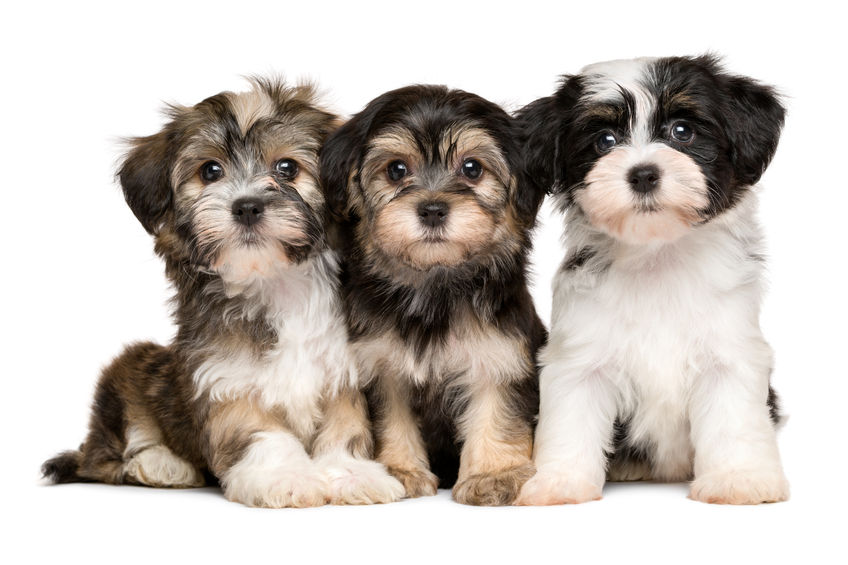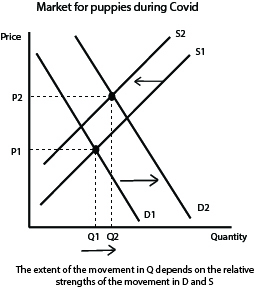Activity 2h: The market for dogs during COVID-19

1. The demand for dogs may have increased due to:
- changes in living conditions — with more people working from home, they may feel they can more effectively cater for the dog’s needs. As mentioned in the case study, this can be linked to the factor, tastes and preferences.
- Australia is currently experiencing 3 low interest rate environment, so that those with 3 variable rate mortgage some households may have more discretionary income to devate to spending on dogs.
2. The supply of dogs may have decreased due to:
- Puppies can no longer be sold in pet shops (Government intervention has effectively caused a permanent disruption to supply).
- Other forms of government intervention may have alsa increased the cost of production (such as limits on the number of female dogs that a breeder could keep)
3. The diagram needs to show a shift of the demand curve to the right and a shift of the supply curve to the left. Note the resulting change in the equilibrium price might actually be ambiguous.

4. Asmentioned in the case study, when a person buys 2 dog, they also demand complementary products such a5 toys, food and veterinary and grooming services. Although the article does not mention substitutes, it could be argued that (for some dogs) it would not be sppropriate for people to purchase a cat so their demand may decrease. The increase in the price of sought-after dogs could also mean that people may have to settie for less fashionable dogs, which would cause the demand for these dogs to rise also.
5. As the pandemic ends, it is predicted that some of the dogs may have been purchased without a full consideration of the commitment required. Many dogs have been “abandoned, handed into animal shelters and resold” because owners are unable to care for them (for further information see the following article:
https://7news.com au/life: -alth-wellbeing/australian-pounds-record-spike-in-animals-as-coronavirus-Jockdown-eases-<-1104986
The demand for dogs is predicted to fall as people return to work and the higher prices will provide incentives for breeders to breed more dogs. Overall, this would result in a shift in the demand curve to the left and an increase in the supply (resulting in lower prices but it is difficult to determine whether more will be sold.)

